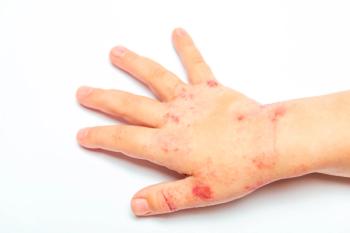
Diaper banks can help families prevent diaper rash
Parents who are struggling financially often try to stretch their diaper supply, which may increase the risk of a child developing diaper rash. Diaper banks are one place that can help.
Changing soiled diapers is an important part of preventing and managing diaper rash, but for many parents, this task isn’t as easy as it seems.
A 2013 study revealed that a third of parents struggle financially to provide diapers for their infants, and that changing diapers less frequently is usually one of the first things parents do to stretch their diaper supply.1
Local and national diaper banks help supplement diaper supplies for families in need, but the past 2 years of pandemic living and supply chain issues have put a strain on both parents and the philanthropic organizations they turn to for help.
Joanne Samuel Goldblum, chief executive officer of the National Diaper Bank Network based in New Haven, Connecticut, said many parents come to diaper banks because they want to change their child’s diaper more often, but they don’t have the means. Diaper banks fill a tremendous need, supplying an estimated 100 million diapers a year in the United States alone. Last year, after months of quarantine parenting, lost work hours, and supply chain shortages, she noted that diaper banks in the United States distributed closer to 180 million diapers.
Although most branches haven’t seen a complete lack of supply during the pandemic, Goldblum stated there have been limited pockets of the country that have seen shortages, and other that have had difficulty finding specific types of products.
“At the beginning of the COVID pandemic there was a run on everything because people with means were hoarding and buying more than they needed to not run out,” Goldblum explained. “As time went by, that really changed. We have a membership of more than 250 organizations across the country. There have been some issues with particular sizes, and people might have had to choose another brand or size up, but there has been no point when a diaper bank said ‘we can’t get diapers.’”
Diaper banks across the country receive their supplies from donations of diapers or money, Goldblum added. As a founding sponsor of the National Diaper Bank Network, Huggies supplies about 20 million diapers to the organization each year. Outside of that, cash donations tend to be preferred, as diaper banks can stretch these dollars much further than when diapers themselves are donated. Bulk buying can yield up to half off of retail prices, allowing donations to go much further, Goldblum noted, and diaper banks can do their own ordering to fulfill specific size needs. For some reason, Goldblum explained, size 3 is a commonly donated size of diaper, even though most infants spend the bulk of their diapered years in sizes 5 and 6.
Recurring diaper rash can be a sign that diapers are not being changed often enough, and Goldblum stressed that this might not be by choice. Although most pediatricians include questions about access to food and medications in their assessments, Goldblum said she also encourages all pediatricians to ask parents about how well they are able to supply diapers for their child. It’s important to ask directly, she added, and not just use what you see in the clinic to make an assessment.
“Often, people will use their last diaper to make sure their doctor doesn’t think they don’t change their baby,” Goldblum noted. “It’s really important to ask the question and not make assumptions based on what you see.”
Pediatricians can direct families to the
Reference
1. Smith MV, Kruse A, Weir A, Goldblum J. Diaper need and its impact on child health. Pediatrics. 2013;132(2):253-259. doi:10.1542/peds.2013-0597.
Newsletter
Access practical, evidence-based guidance to support better care for our youngest patients. Join our email list for the latest clinical updates.








